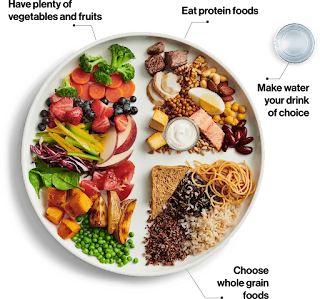I’m trying to pay attention to how much I sit, and just getting up and away from my screens helps. There is always some cleaning and organizing to do inside and outside, and I can always go for a walk. When I’m feeling energetic, I can put on a workout video (I have the FitOn app) or some music to dance to (I like the Apple Music Dance Workout). Even when I can’t think of anything, I can make myself a cup of tea and stand at a window to drink it.
I’ve been thinking and writing about an article from Shape that listed 5 ways to slow down or avoid some of the degeneration that is associated with ageing. This is now the fourth point and my fourth post in the series.
The first 2 were about diet: here’s a link to the Omega-3 post and a link to the frequent small meals post. The third recommendation was this to work out every day (link to my post) and this one today is also about movement.
#4 Stay on your feet
Sitting is bad. “Sitting is the New Smoking” is a popular phrase coined by Dr. James Levine, director of Mayo Clinic at Arizona State University. I hear it all the time. Quitting sitting will be everyone's top New Year's Resolution for 2022.
The Canada Public Health recommendation on exercise addressed this issue, stating that our goal should be to limit our daily sedentary time to 8 hours or less, including no more than 3 hours of recreational screen time and breaking up long periods of sitting.
You might have a fancy office chair that's ergonomically designed, and that's excellent. If you don't, you (or your boss) should invest in one. Here’s something you can read about that. Still, you should make sure you get out of it regularly, like every half-hour or so.
 |
| Sitting in an Ergonomic Chair |
If you have a sedentary job, can you do some standing or
walking while you work? When I worked at the office (CWNC), I had an adjustable
standing desk and an anti-fatigue mat to stand on. It was excellent. During the
pandemic, when I was working at a desk in my bedroom, I frequently went
downstairs to make tea, and consequently had frequent bathroom visits, to force
myself out of my chair. I was always sure to go to the kitchen, at home or at
the office, for my lunch break. There are lots of reasons not to have lunch at
your desk. Whenever possible, I would eat outdoors to get some vitamin D and a
really good break from work.
Do you sit at a computer or laptop at home in your spare time too, on social media or playing games or watching videos, or do you sit and watch television, Netflix? Can you change your habits to reduce your sitting? Can you take your kids, grandkids, or pet to the park, shoot some baskets, or join a class or a team? Is there a bar or restaurant in walking distance from your home or workplace? Can you watch your show while you do laundry? Cooking and cleaning provide opportunities to stretch and move. Can you think of hobbies that get you out of your seat?
When the pandemic gets
under control, it will be easier to go out and do things. Until then, do what you can. Small movement improvements will help you quit your sitting habit. Even having a cup of tea while standing at a window will make you
feel better and get you out of your seat.
 |
| Screenshot of my favouite playlist for dancing |





